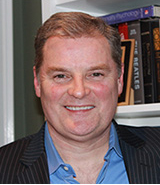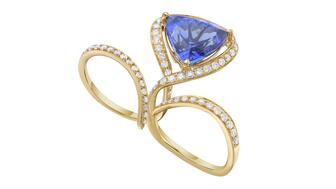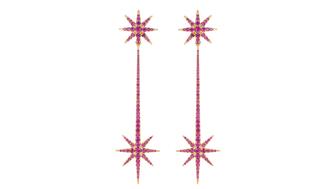Carlos Jose Hernandez and Joshua Zuazo were sentenced to life without the possibility of parole in the 2024 murder of Hussein “Sam” Murray.
When salespeople know just enough
There is nothing worse as a customer than asking a question and getting a blank stare. But that doesn’t mean all the sales necessarily go to those who know the most, Peter Smith writes.
There is nothing worse as a customer than asking a question and getting a blank stare. I have no issue whatsoever if a salesperson has to go find some information for me and get back to me, but there’s something downright irritating and, I might add, wholly transparent when a sales person tries to fake it.

There were two things I was convinced of after our brief exchange: They didn’t have any kind of warranty that would satisfy me and whatever sales training the store provided for the salespeople was sadly lacking. There may be occasions when you can “fake it ‘til you make it” but this was probably not the time to do it. The salesperson (and I use that word loosely in that particular instance) should have known the answer to that simple question or replied, “Great question, I just started and I don’t know the answer to that very good question. Give me a moment and I’ll find out for you.”
There are two distinct types of product information that are essential for the retail sales professionals: the basics and the emotive. The basics, as implied, is a good working knowledge of the products and/or services offered by the business. It does not have to be a deep and comprehensive understanding of every nuance and every modicum of minutiae that anyone could ever ask about a given product. It should, however, be a solid understanding of the main elements of your store’s products and services.
In the jewelry business, where I have spent the majority of my career, there is ample evidence that not only are the “deep-dive, minutiae folks” not very
Frank Cespedes, a senior lecturer at the Harvard Business School wrote in his book, Aligning Strategy and Sales, “The first task of training is to build relevant competence.” Relevant is the operative word in that statement and that’s where many weaker sales people fall short. They believe that more information, more details and more product specifications increases the prospect’s likelihood to make a purchase. Not only is that expectation patently false, but such product information overload has virtually no consistent correlation to sales success.
A wing and a prayer is not a good strategy for customer engagement. There is perhaps no quicker way to alienate a prospect then by bluffing your way through his or her questions about a given product. You must know the fundamentals of the products your store carries before you can hope to move on to the stuff that really matters, emotional engagement. That said, practicing your open-ended questions, your ability to overcome objections and your closing techniques is every bit as important.
The second aspect of product knowledge is very personal and very effective. Great salespeople make a habit of falling in love with certain products in their stores and they then use those products as reference points to anchor their conversations with customers. The product in question would typically include a range of styling and price points so that the products can easily be called upon at the appropriate time.
A word to the wise: Be careful when selecting products for your reference points so that they do not represent too narrow a style or aesthetic orientation. If your own taste is too specific, it may not align with a broad enough base of customers to ensure good business.
Select a range of styles and price points and familiarize yourself with as many details as you need on those specific pieces to be able to competently and confidently talk about them. Although you may actually sell some of these pieces from time to time, the more important learning being satisfied here is that the selected products become valuable tools in your discovery process with your customers. They become, in the best-case scenario, a part of the narrative to uncover customer needs.
Do not beat up your customer with infinite and irrelevant product details, and do not use the pre-selected items to product-dump, an unusually irksome and wholly ineffective way to engage a customer. Use the elected products to demonstrate your passion and your pride in what you do and with whom you do it for. Use them as a genuine way to communicate the quality and value of your product and the customer experience. Use the products as a way to show that you too are a customer and you yourself would love to own the products in question.
That kind of connection is very powerful, as it is as much about what is communicated through your body language and your unspoken words as much as it is about what you say. Leonard Mlodinow wrote in Subliminal, How Your Unconscious Mind Rules Your Behavior, “Language is handy, but we humans have social and emotional connections that transcend words, and are communicated--and understood--without conscious thought.” That kind of emotive transference is more powerful than any product details you might have spoken. It says, “I believe in this product, I would want to own this myself.”
Product information is not a weapon to be sharpened every day so that unsuspecting customers can be slayed at will by your great intellect and unbounding knowledge. Take the time to understand what your store’s products and services are. Embrace every opportunity to fully explore the different product categories and try to uncover interesting details and nuances that you can use as appropriate. Understand the important features and take the time to note how those features might benefit your customers.
Do not, however, make the mistake of thinking that the spoils go to those who know the most. They don’t, and it rarely ever has. Great salespeople know their products just well enough to use that information as a catalyst to emotively connect to their customers. That is a fundamentally different approach than being the smartest person in the store who just doesn’t sell that much and who, if we’re being very honest, frequently bores the customers into our competitors’ stores.
Peter Smith, the author of Hiring Squirrels: 12 Essential Interview Questions to Uncover Great Retail Sales Talent, has spent more than 30 years building sales teams at retail and at wholesale. He is president of Vibhor Gems and he has previously worked with companies such as Tiffany & Co., Montblanc and Hearts On Fire. Email him at peter@vibhorgems.com, dublinsmith@yahoo.com or reach him on LinkedIn.
The Latest

Yood will serve alongside Eduard Stefanescu, the sustainability manager for C.Hafner, a precious metals refiner in Germany.

The New Orleans jeweler is also hosting pop-up jewelry boutiques in New York City and Dallas.

How Jewelers of America’s 20 Under 40 are leading to ensure a brighter future for the jewelry industry.

Set in a Tiffany & Co. necklace, it sold for $4.2 million, the highest price and price per carat paid for a Paraíba tourmaline at auction.


The jeweler’s “Deep Freeze” display showcases its iconic jewelry designs frozen in a vintage icebox.

Take luxury gifting to new heights this holiday season with the jeweler’s showstopping 12-carat sphene ring.

Roseco’s 704-page catalog showcases new lab-grown diamonds, findings, tools & more—available in print or interactive digital editions.

This year's theme is “Unveiling the Depths of the Ocean.”

In its annual report, Pinterest noted an increase in searches for brooches, heirloom jewelry, and ‘80s luxury.

Starting Jan. 1, customers can request the service for opal, peridot, and demantoid garnet.

The 111-year-old retailer celebrated the opening of its new location in Salem, New Hampshire, which is its third store in the state.

The new catalog features its most popular chains as well as new styles.

The filmmaker’s personal F.P. Journe “FFC” prototype was the star of Phillips’ recent record-setting watch auction in New York.

The new location in the Design District pays homage to Miami’s Art Deco heritage and its connection to the ocean.

Inflations, tariffs, and politics—including the government shutdown—were among consumers’ top concerns last month.

“Longtime favorite” presenters, as well as first-time speakers, will lead talks and workshops at the annual event in Tucson next year.

Silas Smith of Meridian Metalworks won the challenge with his pendant that blends Australian and American landscapes.

The sale of the 31.68-carat, sunset-hued stone was part of Sotheby’s first series of events and auctions in Abu Dhabi.

Most customers who walk into your store this month have made up their minds. Your job is to validate their choice, Emmanuel Raheb writes.

The collection features characters and motifs from Ukrainian folklore, including an enchanted mirror and a magic egg.

MatrixGold 3.11, the newest version of the jewelry design program, offers more flexibility, precision, and creative control.

The pavilion will be part of the 2026 JA New York Spring show, scheduled for March 15 to 17.

Kadet, a 1994 National Jeweler Retailer Hall of Fame inductee, helped grow the family-owned retailer in the Chicago area and beyond.

Billed as the world’s smallest wearable, Lumia Health’s new smart earrings have a health tracker subtly embedded in the back.

Don’t let those with December birthdays feel blue. Help them celebrate their month with blue zircon, turquoise, and tanzanite.

The new pink sapphire version of the piece dances with its wearer in the brand’s “Icons After Dark” holiday campaign.

























